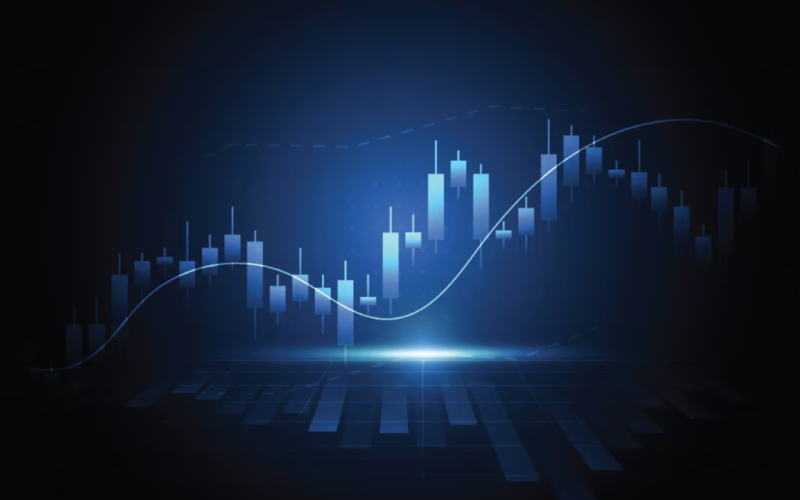by Liz Ann Sonders, Chief Investment Strategist, & Kevin Gordon, Charles Schwab & Company Ltd.
While focus remains on when the Fed will start cutting rates, history suggests other factors must be looked at when assessing forward stock market performance.
For our detailed commentary on the January Federal Open Market Committee (FOMC) meeting, see this from our posting last Wednesday. The net is that Fed Chair Jerome Powell was very clear that the Committee's bias is against initiating rate cuts as soon as the March FOMC meeting. Friday's release of the Bureau of Labor Statistics (BLS) jobs report for January likely cemented a later start to rate cuts this year.
We won't deep-dive the jobs report in this report, but here are the salient details:
- Payrolls were up 353K, well above expectations, with broad-based strength across sectors.
- Annual benchmark revisions suggest recent job growth has been stronger than initially expected.
- Household employment was negative again, but stripping out new BLS population controls yields a healthy increase.
- The unemployment rate remained steady at 3.7% alongside a rise in labor force participation.
- Wage growth picked up, but there was a decline in average weekly hours worked (perhaps due to unseasonably cold weather around the country).
Fed cycles and market returns
Yes, it's quite easy to look at past Fed cycles and calculate average stock market performance over various periods associated with the full cycle. Shown below is the average performance of the S&P 500 leading into the final hike of each of the prior 14 rate cycles (since 1929). We also show the more recent performance since what we presume is the final hike in this cycle, back in July 2023. Indeed, after a weak period around the mini banking crisis last year (the low point of the turquoise line), stocks have staged a remarkable recovery. That's all great, but the analysis should not stop here.
Current vs. average performance

Source: Charles Schwab, Bloomberg, Federal Reserve, 1929-2019.
Current Fed rate hike cycle (thru 2/2/2024) assumes terminal hike occurred on 7/26/2023. Indexes are unmanaged, do not incur management fees, costs and expenses and cannot be invested in directly. Past performance does not guarantee future results.
Wide array of past outcomes

Source: Charles Schwab, Bloomberg, Federal Reserve, 1929-2019.
Current Fed rate hike cycle (thru 2/2/2024) assumes terminal hike occurred on 7/26/2023. Green shading represents best historical performance before and after last Fed rate hike. Red shading represents worst historical performance before and after last Fed rate hike. Indexes are unmanaged, do not incur management fees, costs and expenses and cannot be invested in directly. Past performance does not guarantee future results.

Source: Charles Schwab, Bloomberg, Federal Reserve, 1929-2/2/2024.
*Assumes terminal hike for current rate hike cycle occurred on 7/26/2023. Green shading represents best S&P 500 performance and red shading represents worst S&P 500 performance. Indexes are unmanaged, do not incur management fees, costs and expenses and cannot be invested in directly. Past performance does not guarantee future results.
It does start to lean more positive once the Fed started to cut rates. Although the ranges were still wide, there were only three negative outcomes six months later, and only two 12 months later. The most negative outcome during the pause period was in 1974, when stocks were still reeling from the brutal recession at that time; the best performance was in 1981 after the Fed, under Paul Volcker, had slayed the inflation dragon. The most negative outcome following an initial cut was in 2006-2007 during the lead-in to the Global Financial Crisis.
We expect volatility to pick up in the equity market as it grapples with the crosscurrents likely to persist in terms of economic and inflation reports. Whereas every major index moved directly in contrast to the extreme moves in Treasury yields last year, it has shifted this year to stocks down the capitalization spectrum. The Russell 2000 has had its swings more directly tied to changes in yields given the generally higher interest-rate sensitivity of smaller companies, especially via credit channels.
Helping keep larger cap stocks and the indexes they dominate—like the S&P 500 and Nasdaq—in stronger uptrends has likely been the combination of their generally lower sensitivity to monetary policy uncertainty and stronger earnings fundamentals.
Earnings update
Wavy pattern of estimates

Source: Charles Schwab, LSEG I/B/E/S, as of 2/2/2024.
Forecasts contained herein are for illustrative purposes only, may be based upon proprietary research and are developed through analysis of historical public data. Past performance is no guarantee of future results.
Decent beat rate

Source: Charles Schwab, LSEG I/B/E/S, as of 2/2/2024.
Indexes are unmanaged, do not incur management fees, costs and expenses and cannot be invested in directly. Past performance does not guarantee future results.

Source: Charles Schwab, LSEG I/B/E/S, as of 2/2/2024.
S&P 500 sectors shown. Forecasts contained herein are for illustrative purposes only, may be based upon proprietary research and are developed through analysis of historical public data. Past performance is no guarantee of future results.
Profit margins in focus
Margins dip again

Source: Charles Schwab, FactSet, as of 2/2/2024.
Indexes are unmanaged, do not incur management fees, costs and expenses and cannot be invested in directly. Past performance does not guarantee future results.
The January effect
As shown in the chart below, the rolling one-year correlation between yields and stocks has mostly been negative for the past year. That coincided with rates rising (falling) for the wrong (right) reasons in that inflation was becoming more (less) of an issue.
How we roll

Source: Charles Schwab, Bloomberg, as of 2/2/2024.
Correlation is a statistical measure of how two investments have historically moved in relation to each other, and ranges from -1 to +1. A correlation of 1 indicates a perfect positive correlation, while a correlation of -1 indicates a perfect negative correlation. A correlation of zero means the assets are not correlated. Indexes are unmanaged, do not incur management fees, costs and expenses and cannot be invested in directly. Past performance is no guarantee of future results.
Good news or good news first?
Good to be good again?

Source: Charles Schwab, Bloomberg, Bureau of Labor Statistics, as of 1/31/2024.
Nonfarm payrolls y-axis truncated for visual purposes. Indexes are unmanaged, do not incur management fees, costs and expenses and cannot be invested in directly. Past performance is no guarantee of future results.

Source: Charles Schwab, Bloomberg, Bureau of Labor Statistics. 1950-1/31/2024.
Max indicates best return in period while min indicates worst return in period. Indexes are unmanaged, do not incur management fees, costs and expenses and cannot be invested in directly. Past performance does not guarantee future results.
In sum
Copyright © Charles Schwab & Company Ltd.















